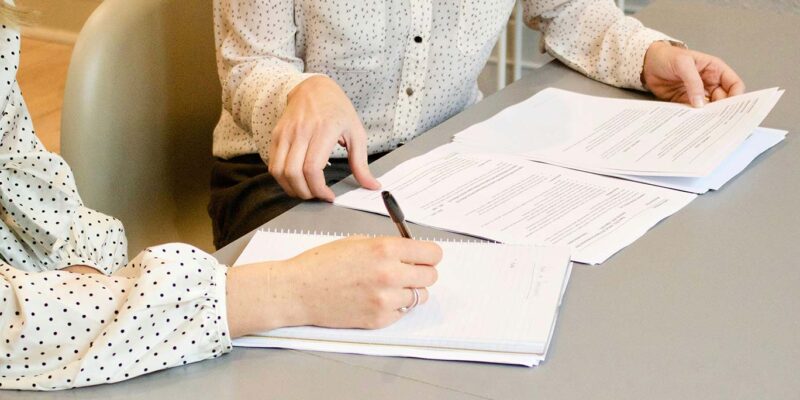Manchester 0161 832 2500 | London City 0204 505 8080 | London Finchley 020 8349 0321
Secure PaymentThe implication of the Building Safety Act 2022 (“The Act”) • BBS Law
Introduction
As a result of the Grenfell Tower disaster in 2017, the Building Safety Act 2002 was granted Royal Assent on 28 April 2022. One of the major aim of the Act is to give residents and leaseholders more rights, powers, and protections – so homes across the country are safer, especially high-rise buildings.
The Act confers more responsibility on Landlords to deal with remedial works of historical safety defects at their cost and some leaseholders who qualify should not be the ones to bear this burden.
Building owners will no longer be legally able to charge qualifying leaseholders for any costs in certain circumstances where a building requires cladding to be removed or remediated. This protection also covers costs associated with historical non-cladding safety remediation.
However, before a leaseholder can benefit from these protections, their lease must pass certain tests, i.e qualify as a ‘Qualifying Lease’. If the Lease does not pass this test, the Landlord can pass the cost of these remediation works to the leaseholder of that lease through the service charge.
Key Points
1. Qualifying Lease Test
Section 119 (2) of the Act provides that a lease is a qualifying lease if:
(a) it is a long lease of a single dwelling in a relevant building,
(b) the tenant under the lease is liable to pay a service charge,
(c) the lease was granted before 14 February 2022, and
(d) at the beginning of 14 February 2022 (“the Qualifying Time”):
(i) the dwelling was a relevant tenant’s only or principal home,
(ii) a relevant tenant did not own any other dwelling in the United Kingdom, or
(iii) a relevant tenant owned no more than two dwellings in the United Kingdom apart from their interest under the lease’.
It is important to note that where the building is owned by the original developer or any associated company, the burden of the cost of remedying such defect will still lie with such developer.
There is a presumption under the Act that a lease is a qualifying lease if it passes the above tests unless the Landlord has taken reasonable steps to obtain the Deed of Certificate from a tenant and the tenant does not provide the Deed of Certificate.
- Leaseholders Deed of Certificate: This contains the information the building owner requires in order to determine the qualifying status of the lease and calculate remediation cap. The leaseholder must complete this Deed and serve on the Landlord at any time to confirm their entitlement to their lease as a qualifying one.
- Landlord’s Certificate: When the Landlord receives the Deed of Certificate, they must within four weeks serve on the leaseholder the Landlord’s Certificate, which confirms if there are any remediation works due to the building.
Problems with Lease Extension: There is an accidental loophole in the law as to whether extending a qualifying lease, which will be considered as a surrender and regrant, will now disqualify such lease as a qualifying lease as it will in effect be deemed to be granted after 14 February 2022. You should ensure you speak to your lawyer about this issue before extending a Qualifying Lease in a building that potentially requires remediation.
2. Relevant Building Test
Section 117 of the Act provides that this is a self-contained building or self- contained part of a building that contains at least two dwellings and is 11 metres high or has at least 5 storeys.
Please note that this does not include buildings that have been enfranchised or owned by the tenants or is on a commonhold land.
In measuring the building, the height of the building is to be measured from ground level to the finished surface of the floor of the top storey of the building. Any storey below ground level or which is a roof top machinery will not be considered with the measurements.
3. Relevant Defect Test
Section 120 defines relevant defect as a defect that arises because of works relating to the construction or conversion of the building or undertaken or commissioned by or on behalf of the landlord or management company within the last 30 years and such works causes building safety risk. Building safety risks are risk to the safety of people in or about the building arising from the spread of fire or the collapse of the building or any part of it.
4. Who is responsible for the costs?
- No service charge payable for cladding remediation where the lease is qualifying lease.
- No service charge is payable if the landlord meets the contribution condition, i.e. The contribution condition is that the landlord or landlord group’s net worth at the qualifying time was more than £2 million per relevant building. Please note that this would not apply to a private registered provider of social housing, local authority or a prescribed person.
- No service charge payable where lease the property is in London and the value is below £325,000 and £175,000 for outside London properties.
- No service charge payable for defect for which landlord or associate responsible.
5. Capped Contributions
If the landlord does not meet the developer test nor does not have a net worth of at least £2 million, and the lease is not worth less than the value of £325,000 (or £175,000 outside of London) then the landlord may recoup a capped contribution from a qualifying leaseholder for non-cladding defects. The cap will include any previous payments made by the leaseholder towards the remediation of any relevant defect. The capped contributions are payable over 10 years. You can refer to Leaseholder contribution caps – GOV.UK (www.gov.uk) for more information on the figures to be applied to these contributions.
Conclusion
Sellers – It is important for sellers in relevant buildings to consider whether to complete and execute the leaseholder’s Deed of Certificate and serve it on their landlord in preparation of their sale. It is important to seek appropriate legal advice before doing this.
Buyers – Buyers should consider requesting from the Seller’s duly completed updated TA7 form, duly executed Leaseholder’s Deed of Certificate and confirmation they have been served on the Landlord before they exchange contracts.
Acting for Lenders – when acting for lenders it is important for Conveyancers acting on any blocks of flats with 5 stories and above, to consider each individual lender’s requirements regarding the Building Safety Act.
Leaseholders Extending their lease – it is important for leaseholders willing to extend their lease to consider the implication of extending a qualifying lease in a relevant building, as this may be detrimental to their rights under the Building Safety Act. Please ensure you seek legal advice before you agree to extend your lease.


